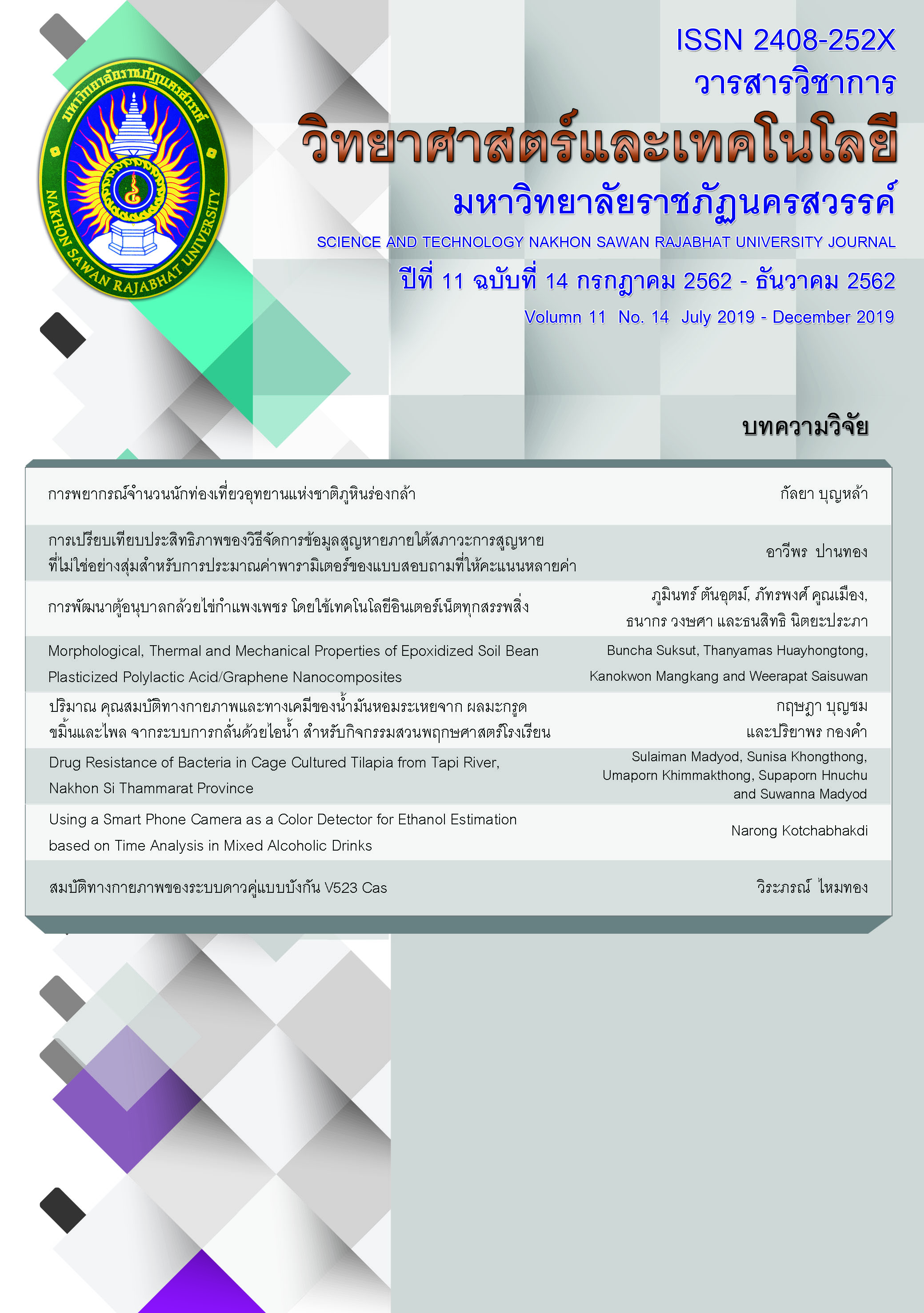สมบัติทางกายภาพของระบบดาวคู่แบบบังกัน V523 Cas
Keywords:
V523 Cas, Physical Properties, ModelAbstract
ระบบดาวคู่ V523 Cas ที่ทำการศึกษาในครั้งนี้ ได้ทำการสังเกตการณ์โดยใช้กล้องโทรทรรศน์ สะท้อนแสงแบบริชชี-เครเทียน ขนาดเส้นผ่านศูนย์กลาง 0.7 เมตร เชื่อมต่อด้วยกล้องซีซีดี โฟโตมิเตอร์ ผ่านแผ่นกรองแสงในช่วงความยาวคลื่น 525 นาโนเมตร (V) และ 595 นาโนเมตร (R) ของระบบ UBV ในวันที่ 20 - 21 ธันวาคม พ.ศ. 2561 ณ หอดูดาวเฉลิมพระเกียรติ 7 รอบ พระชนมพรรษา ฉะเชิงเทรา จากการวิเคราะห์พบว่า ระบบดาวคู่ V523 Cas เป็นระบบดาวคู่แบบแตะกัน ด้วยอัตราส่วนมวล (q=m2/m1) 1.77 โดยมีเปอร์เซ็นต์การแตะกัน 7.42% นอกจากนี้ยังพบว่า มีจุดร้อนอยู่บนดาวปฐมภูมิ อุณหภูมิประมาณ 1.11 % ของอุณหภูมิพื้นผิวของดาวปฐมภูมิ และจุดเย็นอยู่บนดาวทุติยภูมิ อุณหภูมิประมาณ 0.80 % ของอุณหภูมิพื้นผิวของดาวทุติยภูมิ
References
Jeong, J. H., Kim, C. & Lee, Y. (2010). Photometric observations of the contact binary system V523 Cassiopeiae. Journal of Astronomy and Space Science. 27(2), 81-88.
Kang, Y.W. (2010). New light curve analysis for large numbers of eclipsing binaries I. Detached and semi-detached binaries. Journal of Astronomy and Space Science. 27(2), 75-80.
Maceroni, C. (1986). Light-curve solution of contact binaries and the uniqueness of derived mass ratio: V523 Cas. Astronomy and Astrophysics, 170 (1), 43-47.
Milone, E.F., Hrivnak, B.J. & Fisher, W.A. (1985). A radial-velocity study of V523 Cassiopeiae. The Astronomical Journal, 90 (2), 354-357.
Samec, R.G., Hamme, W.V. & Bookmyer, B.B. (1989). Synthetic light-curve analysis of the very short period binaries TY bootis, AD Cancri, and V523 Cassiopeiae. The Astronomical Journal, 98 (6), 2287-2299.
Zboril, M. & Djurasevi, G. (2006). Progress report on the monitoring active late-type stars in 2005/2006 and the analysis of V523 Cas. Serbian Astronomical Journal, 173 (173), 89-94.



